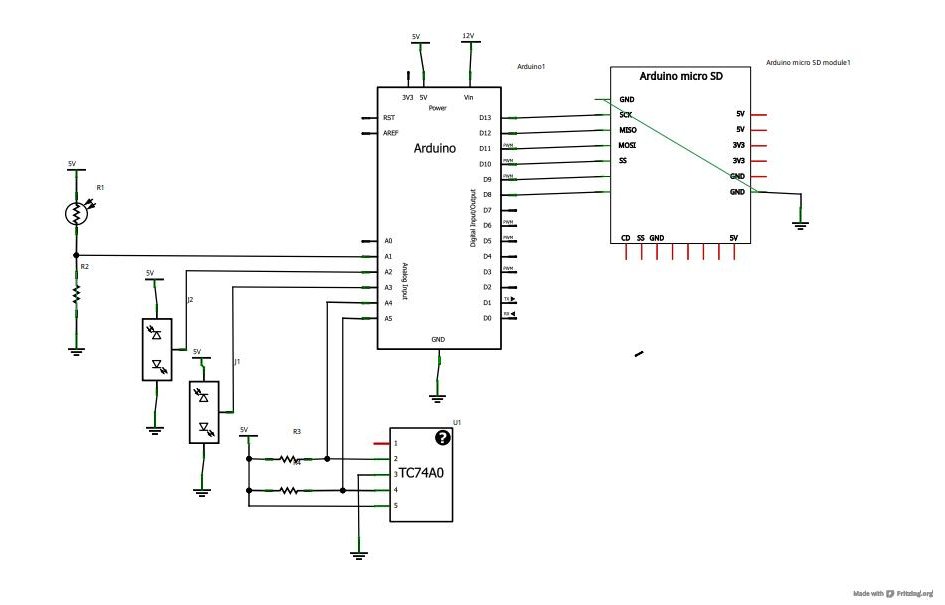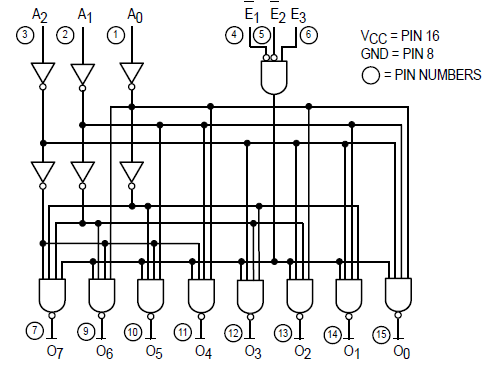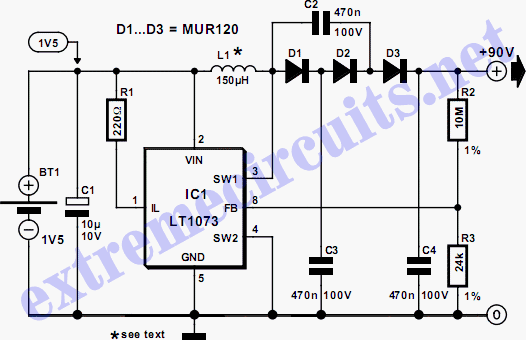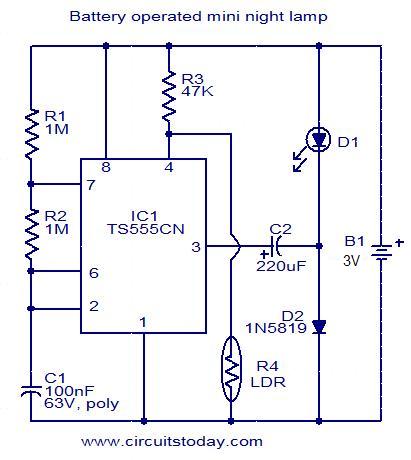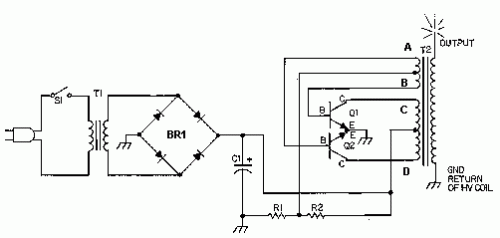
Arduino Running A DC Motor and High Current Lamp
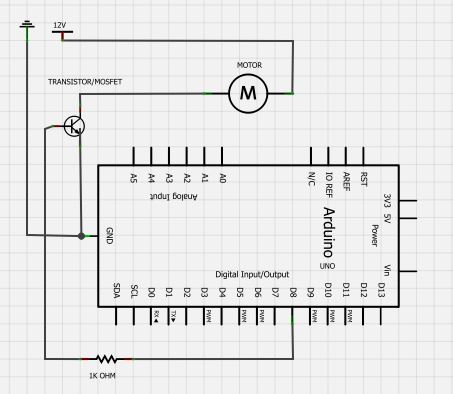
The BC547 transistor has a maximum operating current of 100 mA and a maximum voltage rating of 65 volts. When oriented with the label facing the viewer, the three terminals from left to right are collector, base, and emitter. It is important to note that one BC547 transistor was damaged during setup. A DC motor was tested using a digital multimeter, which indicated a maximum current draw of 150 mA, highlighting an error in the setup. Additionally, the IRF520 transistor, when positioned with the label facing the viewer, has three pins arranged from left to right as gate, drain, and source. Its maximum voltage rating is 100 volts, and it can handle a maximum current of 9.7 amperes.
The BC547 transistor is a widely used NPN bipolar junction transistor (BJT) that is suitable for low-power amplification and switching applications. Its configuration allows it to operate effectively in various electronic circuits. The collector, base, and emitter terminals serve distinct functions: the collector receives the input current, the base controls the transistor's operation, and the emitter outputs the amplified current. While the BC547 can handle up to 100 mA, care must be taken not to exceed this limit, as illustrated by the experience of damaging a transistor during setup due to incorrect current levels.
Conversely, the IRF520 is an N-channel MOSFET that is utilized for higher power applications. Its gate, drain, and source terminals allow for efficient switching and amplification of electrical signals. The IRF520 can manage a maximum voltage of 100 volts and a current of up to 9.7 amperes, making it suitable for driving larger loads, such as motors or high-power LED arrays. The gate terminal is particularly critical, as it requires a voltage to turn the MOSFET on, allowing current to flow from the drain to the source.
In summary, both transistors serve essential roles in electronic circuits, with the BC547 being ideal for low-power applications and the IRF520 for higher power needs. Proper attention to the specifications and limitations of each component is crucial for successful circuit design and implementation.BC547 transistor. Max operating current is 100 mA while max voltage is 65 volts. With the transistorlabelfacing the reader, the three legs from left to right are collector, base and emitter. Note: I destroyed one BC547 transistor while setting this up. I tested the dc motor I used using digital multimeter, it wasgettingmax of 150 mA. An obvious mi stake. The IRF520 Transistor. Facing the label to reader, the three pins from left to right are gate, drain and source. Max voltage is 100 volts while max current is 9. 7amperes. 🔗 External reference
The BC547 transistor is a widely used NPN bipolar junction transistor (BJT) that is suitable for low-power amplification and switching applications. Its configuration allows it to operate effectively in various electronic circuits. The collector, base, and emitter terminals serve distinct functions: the collector receives the input current, the base controls the transistor's operation, and the emitter outputs the amplified current. While the BC547 can handle up to 100 mA, care must be taken not to exceed this limit, as illustrated by the experience of damaging a transistor during setup due to incorrect current levels.
Conversely, the IRF520 is an N-channel MOSFET that is utilized for higher power applications. Its gate, drain, and source terminals allow for efficient switching and amplification of electrical signals. The IRF520 can manage a maximum voltage of 100 volts and a current of up to 9.7 amperes, making it suitable for driving larger loads, such as motors or high-power LED arrays. The gate terminal is particularly critical, as it requires a voltage to turn the MOSFET on, allowing current to flow from the drain to the source.
In summary, both transistors serve essential roles in electronic circuits, with the BC547 being ideal for low-power applications and the IRF520 for higher power needs. Proper attention to the specifications and limitations of each component is crucial for successful circuit design and implementation.BC547 transistor. Max operating current is 100 mA while max voltage is 65 volts. With the transistorlabelfacing the reader, the three legs from left to right are collector, base and emitter. Note: I destroyed one BC547 transistor while setting this up. I tested the dc motor I used using digital multimeter, it wasgettingmax of 150 mA. An obvious mi stake. The IRF520 Transistor. Facing the label to reader, the three pins from left to right are gate, drain and source. Max voltage is 100 volts while max current is 9. 7amperes. 🔗 External reference
